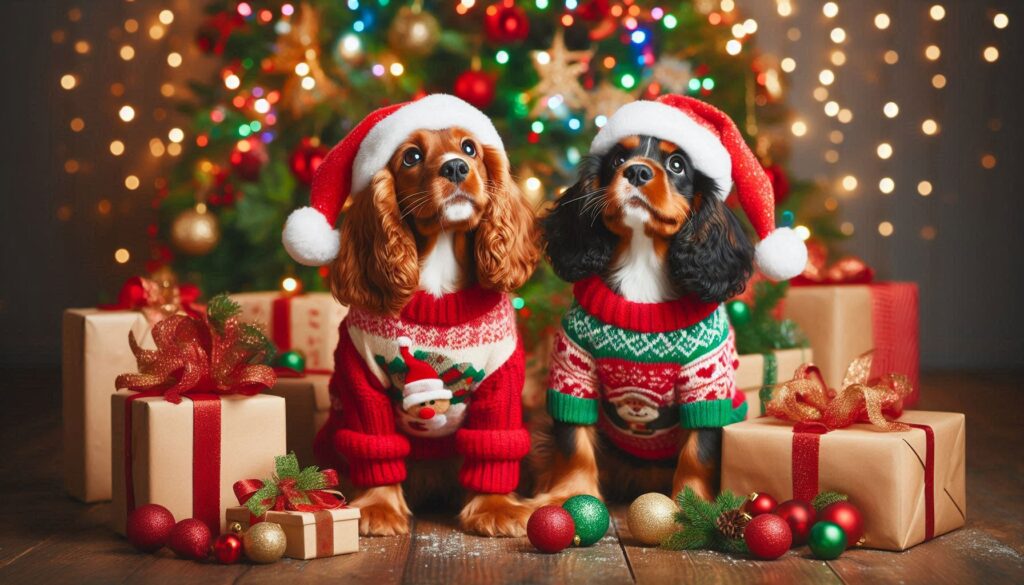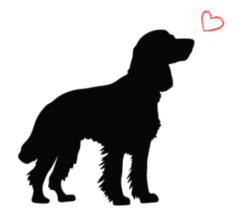
Dogs don’t get the concept of Christmas and New Year; they don’t understand why suddenly there are thirty drunken people in their living room or why food is being dropped or carried around in the hands of small unsupervised children, and they definitely don’t understand why the world explodes at midnight n New Year’s Eve with fireworks, party poppers and champagne corks.
If you are having a party and will be doing your host/hostess with the mostest bit and therefore your dog will not have your utmost attention and other peoples’ kids/husbands/wives will be largely unsupervised please make sure your dog has a safe and secure indoor space with a radio on the drown the noise and a nice chew/bone/toy to occupy them. There have been too many tragedies at this time of year please lets all keep safe while we enjoy the festivities.
This list is by no means exhaustive and if you are in any doubt, err on the side of caution. If your dog (or cat) does ingest anything toxic, contact your vet immediately
Aluminium Foil
When ingested, aluminium foil can cut a dog’s intestines, causing internal bleeding, and in some cases, even death.
Anti-Freeze
If ingested, anti-freeze (ethylene glycol) is often lethal — even in very small quantities. Because many dogs and cats like its sweet taste, there are an enormous number of animal fatalities each year from animals drinking anti-freeze. Poisoning from anti-freeze is considered a serious medical emergency which must be treated by a qualified veterinarian IMMEDIATELY. Keep all such substances out of reach of your pet. If in doubt, err on the side of caution.
Bloat
Bloat (gastric torsion & stomach distension) is a serious life-threatening emergency which must be treated by a qualified veterinarian IMMEDIATELY. Bloat is relatively common among large and deep-chested breeds, such as Basset Hounds, Dobermans, German Shepherds, Mastiff breeds, American Bulldogs and Great Danes. Many experts believe that a feeding large meal within 2 hours of exercise or severe stress may trigger this emergency. Eating quickly, changes in diet, and gas-producing foods may also contribute to this serious condition. Symptoms of Bloat include: unsuccessful retching, pacing, panting, drooling, an enlarged stomach/torso, and/or signs of distress.
Batteries
If batteries are swallowed or ingested, they can be extremely harmful. Do NOT attempt to make your dog vomit but contact your vet immediately.
Electrocution
Christmas tree lights and electrical cords can be fatal if chewed on by a dog (or cat). Whenever possible, keep electrical cords out of reach.
Hypothermia
When a dog’s internal temperature drops below 96 degrees F (by being exposed to cold weather for long periods, or getting both wet and cold), there is a serious risk to the dog’s safety. Small and short-haired dogs should wear sweaters when taken for walks during cold winter weather. Any sign that a dog is very cold — such as severe shivering — should signal the owner to bring the dog indoors immediately.
Ice-Melting Chemicals and Salt
Ice-melting chemicals and salt placed across pavements and roads can cause severe burning to your dog’s footpads. Whenever possible, avoid walking your dog through these substances, and wash off his footpads when you return home.
Toxic foods
Chocolate
Chocolate contains an element which is toxic to dogs, called Theobromine. Even an ounce or two of chocolate can be lethal to a small dog (10 lbs. or less). Larger quantities of chocolate can poison or even kill a medium or large dog. Dark and unsweetened baking chocolates are especially dangerous. Symptoms of chocolate poisoning include: vomiting, diarrhoea, tremors, hyperactivity and seizures. During many holidays such as Christmas, New Year’s Day, Easter and Halloween, chocolate is often accessible to curious dogs, and in some cases, people unwittingly poison their dogs by offering them chocolate as a treat. Always buy chocolate treats that are specially for dogs as these have the toxicity removed, instead of giving human chocolate to your dog
Raisins, grapes, currants and sultanas
These are all toxic to dogs, especially if dried. Whilst it is not known why or how much is poisonous, it is important that foods such as mince pies, Christmas puddings, fruit cake and stollen are kept out of your dog’s reach. Symptoms include vomiting and diarrhoea and can cause kidney failure marked as a decrease in urination, increased thirst and listlessness. If you suspect your dog has ingested any of these, contact your vet immediately
Onions
These are toxic to dogs beware feeding your dog anything containing onions and ensure they are stored out of harms way
Plastic Food Wrap /Cling film
Plastic food wrap can cause choking or intestinal obstruction. Some dogs will eat the plastic wrapping when there are food remnants left coating its surface.
Tinsel and Other Christmas Tree Ornaments
When ingested by a dog (or cat), Tinsel may cause obstruction of the intestines, and the tinsel’s sharp edges can even cut the intestines. Symptoms may include: decreased appetite, vomiting, diarrhoea, listlessness and weight loss. Treatment usually requires surgery. Many ornaments are made of fine glass which easily shatters and can cut paws or damage a dog internally if ingested.
Poisonous Plants:
Dogwood — Fruit
Eggplant — Foliage
Elderberry — Foliage
Elephant’s Ear / Taro — Foliage
English Holly Berries
English Ivy
Equisetum
Euphorbia / Spurges
False Hellebore
False Henbane
Fiddleneck / Senecio
Fly Agaric / Amanita
Four O’Clock
Foxglove
Gelsemium
Ghostweed / Snow On The Mountain
Golden chain / Laburnum
Holly Berries (English and American)
Horsechestnut
Horsetail Reed / Equisetum Hyacinth — Bulbs
Hydrangea — Flower Buds
Iris — Bulb
Ivy
Jack-In-The-Pulpit /Indian Turnip
Jasmine
Jasmine Star
Jatropha — Seeds, Sap
Java bean — Uncooked Bean
Jerusalem Cherry — Berries
Jessamine — Berries
Jimsonweed
Johnson Grass
Juniper — Needles, Stems and Berries
Laburnum
Lambkill / Sheep laurel
Lantana
Larkpsur
Laurel
Lobelia
Locoweed
Lords and Ladies / Cuckoopint
Lily of the Valley — All parts of the plant, as well as vase water
Machineel
Mayapple — All parts, except fruit
Mescal Bean
Milk Vetch
Milkweeds — Foliage
Mistletoe Berries
Moccasin Flower
Mock orange — Fruit
Monkshood
Morning glory
Mother-In-Law’s Tongue
Mountain Laurel
Mushrooms (many wild forms)
Narcissus — Bulbs
Narcissus Jonquilla
Natal Cherry
Nicotine Bush
Nightshades
Oak — Acorns, Leaves
Oleander (very poisonous)
Peach — Pit
Pear Seeds
Pennyroyal — Foliage & Flowers
Peony
Periwinkle
Philodendron
Pikeweed
Pine Needles
Poison Hemlock
Poison Ivy
Poison Oak
Poison Sumac
Pokeweed
Pokewood / Poke cherry — Roots, Fruit
Poppy
Potato plant — New shoots and Eyes
Privet Shrub
Rattlebox
Rhododendron
Rhubarb Plants
Rosary Peas — Pods, Seeds, Flowers
Russian Thistle
Sago Palm
Salmonberry
Scarlet Pimpernel
Senecio / Fiddleneck
Skunk Cabbage
Snapdragon
Snowdrop
Spanish Bayonet
Spider Plant
Star Of Bethlehem
Sudan Grass
Sundew
Tansy — Foliage, Flowers
Tarweed
Thornapple
Tiger Lily
Toad flax — Foliage
Tobacco Leaves
Tomato Plant — All parts, except for fruit
Touch-Me-Not
Toyon Berry — Berries
Trillium — Foliage
Trumpet Vine
Tulips
Venus Flytrap
Verbena
Virginia Creeper — Sap
Tobacco Plants
Water Hemlock
Wildflower
Wild Parsnip — Roots, Foliage
Wisteria
Yellow Jessamine
Yellow Star Thistle
Yew (American, English and Japanese)
